Multimedia Content

Bridge over Yarra at Melbourne, c. 1841 - c. 1845, by Jones, Henry Gilbert (Etcher, c. 1804‑1888), courtesy of The State Library of Victoria.
Details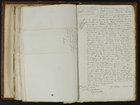
Copy of statement submitted to Magistrate's Court, 5 February 1844, courtesy of Public Record Office Victoria, Victorian Archives Centre.
Details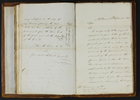
Letter from Charles La Trobe to Chairman of Council, 15 September 1843, courtesy of Public Record Office Victoria, Victorian Archives Centre.
Details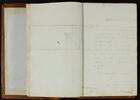
Letter from Charles La Trobe to Mayor, 17 January 1843, courtesy of Public Record Office Victoria, Victorian Archives Centre.
Details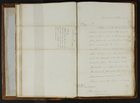
Letter from Charles La Trobe to Mayor, 14 March 1843, courtesy of Public Record Office Victoria, Victorian Archives Centre.
Details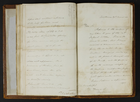
Letter from Charles La Trobe to Mayor, 29 March 1843, courtesy of Public Record Office Victoria, Victorian Archives Centre.
Details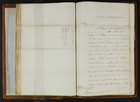
Letter from Charles La Trobe to Mayor, 21 April 1843, courtesy of Public Record Office Victoria, Victorian Archives Centre.
Details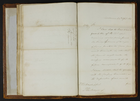
Letter from Charles La Trobe to Mayor, 24 April 1843, courtesy of Public Record Office Victoria, Victorian Archives Centre.
Details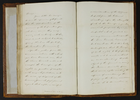
Letter from Charles La Trobe to Mayor, 28 April 1843, courtesy of Public Record Office Victoria, Victorian Archives Centre.
Details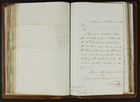
Letter from Charles La Trobe to Mayor, 26 January 1844, courtesy of Public Record Office Victoria, Victorian Archives Centre.
Details
Bridges
Melbourne's first bridge was probably a simple timber culvert across one of the small creeks flowing into the Yarra River. One such structure was built at the bottom of William Street in 1842. A punt service across the Yarra was first provided in 1838, followed shortly afterwards by a ferry. The Melbourne Bridge Co., formed in 1840, built a crude timber toll bridge just downstream of the present Princes Bridge site in 1845, but their monopoly lasted only six years. David Lennox, as superintendent of bridges for the Port Phillip District, was responsible for the first permanent bridge over the Yarra, opened in 1850. A graceful stone structure, it spanned the river with a single low arch of exceptional length (45.7 m). It was the longest stone arch ever built in Australia and marked the beginning of a fine tradition of innovative Melbourne bridges.
Melbourne's first railway bridge was a timber trestle structure just below the Yarra Falls, built for the Hobsons Bay Railway in 1854. By contrast, the government railway to Williamstown crossed the Maribyrnong River on a grand iron bridge with a clear span of 61 m, another Australian record. Its wrought-iron box girders were fabricated in England and shipped out in sections to be erected on site.
A similar construction was adopted for the Church Street Bridge (1856), while imported lattice-trusses were used for railway bridges at Cremorne (1860) and Hawthorn (1861). In 1861, an iron lattice-girder bridge for road traffic was built across the Yarra at the eastern end of Bridge Road. Though twice modified it survives as Australia's oldest metal truss bridge.
The next two decades would see the construction of Melbourne's oldest surviving stone bridges, crossing Merri Creek in Newlands Road (Coburg), Murray Road (Coburg) and Heidelberg Road (between Northcote and Fairfield), the former two built by convicts from Pentridge Prison.
The 1880s saw a boom in bridge-building, stimulated by railway expansion and the Melbourne Harbor Trust's efforts to widen the lower Yarra. In 1888, Lennox's stone bridge was replaced with an ornate three-span iron arch bridge designed by Charles D'Ebro and John Grainger and built by David Munro. It immediately became a Melbourne landmark. Viewed from the south bank of the river, with the city skyline in the background, it has been more photographed than any other Melbourne bridge.
Munro also won contracts for Queens Bridge (1889) and the Sandridge Rail Bridge (1888), a notable early example of the use of steel plate. At Victoria Street, Richmond, a lightweight iron road bridge was built to the design of Fraser and Chase, two young engineers influenced by the research of Professor Kernot on optimum truss geometry. Upstream at Fairfield, a steel lattice-truss bridge was completed for the Outer Circle Railway (1890), while at Napier Street, Footscray, an iron swing bridge across the Maribyrnong (1893) provided the first direct road access to the western suburbs, without closing the river to navigation.
Opposite the Royal Botanic Gardens, Monash & Anderson built the Morell Bridge (1899) using the patent Monier Reinforced Concrete process. It is generally regarded as Victoria's first major reinforced concrete structure and was the last significant bridge to be built over the Yarra for 25 years.
By the 1920s, increased use of motor vehicles was placing a heavy traffic burden on Melbourne's limited river bridges. Several new bridges were proposed, but political wrangling developed over which authority should fund and build them. Successive governments favoured first the Melbourne and Metropolitan Board of Works (MMBW), then the Country Roads Board (CRB). The saga of the Hawthorn Bridge epitomised the issues. After being damaged by floods in the early 1920s, speed limits were imposed on the bridge and tram crossings suspended. After the government offered to pay less than a quarter of the replacement cost, Richmond Council forced the issue by closing the bridge in February 1926. The government reopened it three days later. The Public Works Department made temporary repairs, while the MMBW was given the task of rebuilding and quickly erected a temporary wooden bridge alongside to carry trams. A new government brought a change of heart and eventually the existing bridge was strengthened and reopened in 1931.
Meanwhile, the Richmond and Prahran councils oversaw construction of a new Church Street Bridge in reinforced concrete (1923), with graceful colonnaded open spandrels. The Railways Construction Branch built the Spencer Street Bridge in steel (1929-30), using an innovative cantilever-suspended span design, and confectionery king MacPherson Robertson personally funded the £19 000 cost of the steel arch MacRobertson or Grange Road Bridge (1934) as a gift to Victoria for its centenary.
The Country Roads (Borrowing) Act 1933 finally gave the CRB the powers to raise loan funds for metropolitan bridges. Among the first projects tackled were Lynch's Bridge over the Maribyrnong (1936-38) and the Hoddle Bridge over the Yarra (1937-38). Both were innovative designs, the former using a composite design of welded steel girders and reinforced concrete deck, while the latter used a single-piece concrete superstructure, cast as a single process over 117 hours.
During World War II, all major bridge construction in Melbourne ceased, but work recommenced in 1946, with the CRB again to the fore. Postwar shortages of materials, contractors, skilled labour and even CRB engineering staff caused numerous construction delays. The Swan Street Bridge over the Yarra took five years to complete (1948-52).
The King Street Bridge, built by Utah Australia Ltd (1957-61), was for a time the State's longest road bridge, extending 756 m over the Yarra and as far south as City Road. Noted for its pioneering use of high-tensile steel, public accolades turned to embarrassment after an accident in which brittle failure caused the collapse of one span during an unusually cold spell in July 1962.
After the Country Roads and Level Crossings Act 1954 provided funding for bridges to eliminate dangerous railway crossings, a new type of bridge emerged. The first was the Clifton Hill Railway Overpass, innovative in its use of precast prestressed concrete slabs and Victoria's first freeway-style circular approach ramp.
By the late 1960s the advance of freeways was dominating new bridge construction in Melbourne. Among these was the West Gate Bridge, Melbourne's first truly landmark bridge, rising to 58 m above the river with two 102 m cable stay towers. Equally significant, though less prominent, was the West Gate Elevated Highway linking the West Gate Bridge to Kingsway (1988). It won international acclaim for its advanced post-tensioned balanced cantilever construction, requiring some 2070 precast prestressed concrete segments, each one different because of the bridge's complex geometry. By 1998 the 5 km western leg of the CityLink Tollway, incorporating the Bolte Bridge over the Yarra, had claimed the title of the city's longest bridge.
